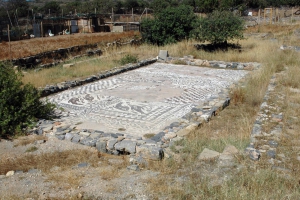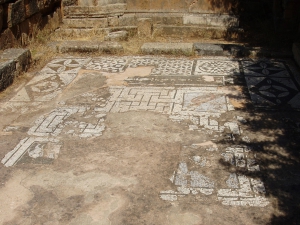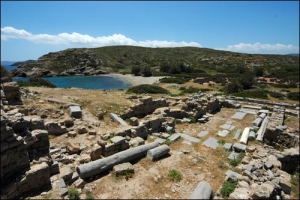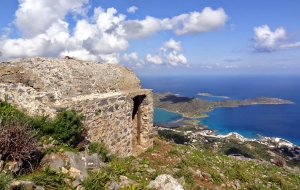Within short distance from Elounda, near the salt pans, we meet few remains of the ancient city Olous (most inside the sea) that was inhabited since the Minoan period. Olous was one of the hundred most important cities of ancient Crete with a maximum population of over 30,000 people.
Ancient Lissos was the seaport of Elyros and was built in a small valley between Sougia and Paleochora. It flourished from the Hellenistic period up to the 9th century, when it was destroyed by the Saracens. It was famous for the Asclepion, where patients from all over the island arrived to be healed from the thermal baths.
The ancient Itanos was one of the strongest cities in Crete, especially during the Hellenistic and Greco-Roman times. The name comes from its founder Itanos, who came from Phoenicia. Its territory, during its peak, stretched from Cape Samonio (current Cape Sidero) to Cape Erythrae (current Cape Goudouras).
At a magnificent location on Mount Oxa, with panoramic views of the lagoon of Elounda, we meet the ruins of a fortified state that is believed to be ancient Naxos. Perhaps, it served as the acropolis of Olous, the ancient town of Elounda.
Menies beach is located on the site of ancient Diktynna. Diktynna was the most important temple of the goddess Vritomartis, which is believed to be goddess Artemis. Thousands worshippers used to come in the area from all over the island. Vritomartis was worshiped here during the Hellenistic and Roman times. The possession of Diktynna was always a conflict between ancient Kydonia and Polirinia.
Matala, ancient Matelon, was a port of Phaestus and Gortys and is well known for the carved caves, which were Grecoroman tombs. The cape south of Matala has been identified as the Cape Nysos and the location where the ships of Menelaus were wrecked (Odyssey).
The present town of Hersonissos retains the name of the ancient city of Hersonissos or Heronissos. The town existed since the Minoan period, but flourished after the conquest of Crete by the Romans.
Elyros was the most important town in southwestern Crete during the Doric and Roman Periods. Ruins are conserved 500m far from the village Rodovani atop the panoramic hill Kefala. The town had two harbors: Syia(current Sougia) and Lissos. The exact location of the town was verified by an inscription with the phrase in Greek "Glory to the people of Elyros".





















































































